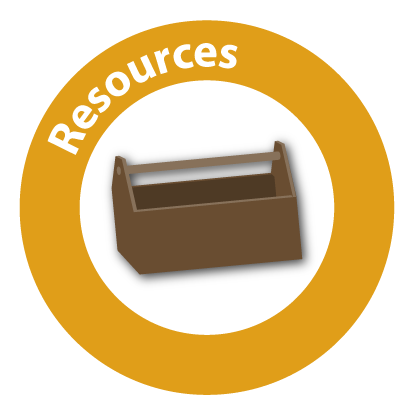|
| | Resources and Frequently Asked QuestionsFind resources to help your family or get answers to frequently asked questions. Resources
Organizations
Frequently Asked QuestionsClick the questions below to see answers to frequently asked questions. ▸ I suspect that my child may be dyslexic. What should I do?The first step in learning more about any concern with your child is to check in with your child’s primary care provider (PCP). Your child’s PCP can review your child’s milestones and check whether physical conditions (like vision or hearing) may be causing problems. Your child’s PCP may also recommend dyslexia screening. Beginning with the 2023-24 school year, all children in public schools grades K-3 will be screened for dyslexia. Families can also request screening for children in grades 4-6. If your child is identified as “at risk,” your child’s school will observe your child’s progress and/or provide structured literacy instruction. In many cases, this may be enough to help your child reach the same reading level as their peers. When children continue to have problems after receiving structured literacy instruction, some families may seek special education services. While a special education evaluation cannot diagnose dyslexia, it can help children to access special education services. Families may also choose to seek a dyslexia diagnosis with a qualified mental health professional or a multi-disciplinary team. The diagnosis process looks at many parts of your child’s development (see Chapter 3 in the Dyslexia Handbook). Dyslexia diagnosis is often not covered by health insurance, so it’s important to check with your provider before getting started. ▸ I got notice that my child is "at risk" for dyslexia. What does that mean?Ohio’s Dyslexia Law created a framework to screen all children in public school for dyslexia and to provide reading intervention. To do this, each school selects a screening tool from a state-approved list and uses it to identify students who are “at risk.” “At risk” means that your child’s score fell below the cutoff line for the screening tool. It does not mean that a dyslexia diagnosis is guaranteed. In fact, most children who are identified “at risk” are able to catch up with peers. When schools identify “at risk” students, they begin progress monitoring. Your child’s school will re-check progress over six weeks and report this to you. If, at the end of six weeks, your child hasn’t made progress, the school may recommend a Tier 2 screening. Within 30 days of the screening, the school must notify you of the results. If the Tier 2 screener shows dyslexic tendencies, the school will also begin intervention according to the Ohio Dyslexia Guidebook (see section 3). For more information on how the tiered approach works in general, check out this resource from Reading Rockets. ▸ My child doesn't go to public school. How can I get help?
Ohio’s Dyslexia Law applies to public schools, community schools (charters), and STEM schools – some private schools and alternative education providers may be exempt from dyslexia screening. Even if your child’s school does not conduct universal screening, it’s still a good idea to talk to your child’s teacher (this podcast can help you to get started). The school may offer screening on an as-needed basis or refer you to a provider who can screen your child. Families can also contact The Lawrence School to schedule a free reading screening. Like Ohio’s statewide screening program, this screener cannot diagnose dyslexia, but it can help families to plan next steps for their child. ▸ What is structured literacy instruction?Structured literacy instruction focuses on key elements of reading – like sounds (phonemes) and how words fit together (syntax). Students learn the key elements in a structured, systematic way that builds on what they’ve already learned. Teachers individualize instruction and track progress regularly. IDA’s primer on structured literacy uses infographics to explain the basics in more detail. ▸ What are some examples of structured literacy programs?There are many different approaches to structured literacy instruction, but some of the the most common evidence-based approaches include:
▸ How do I find a tutor?
A lot goes into finding the right professional to work with your child, but there are some general “buckets” you can think about to make things easier. Experience Personal Characteristics Consistency Once you’ve thought about these things, you can search the Connecting for Kids Provider Directory or schedule an Ask Us 1:1 session to get help from a Family Resource Specialist. ▸ How do I pay for tutoring?
There are several ways families typically pay for reading intervention: Insurance Funding Funding Sources for Learning Loss Free Tutoring Services Jon Peterson Scholarship ▸ Where can I find information on dyslexia in gifted children?
Research suggests that between 2-5% of children are both gifted and have a disability (often called “twice-exceptional” or “2e”). These children may fall through the cracks because their academic achievement masks the disability or vice versa. IDA offers a fact sheet that summarizes identification and offers solutions for gifted students. The Davidson Institute also offers strategies for parents and caregivers. ▸ What kinds of accommodations benefit dyslexic students most?
While each child is different, students with dyslexia tend to benefit from accommodations that give them more time and reduce reading demands. The Yale Center for Dyslexia & Creativity recommends that students start with double the amount of time for assignments and adjust from there. Students may also benefit from assistive technology solutions, including note-taking applications, speech-to-text, audio books and so on. The Lawrence School’s Ethan D. Schafer Center for Learning Differences offers additional information on assistive technology for students. |
Back to Dyslexia Guide.

